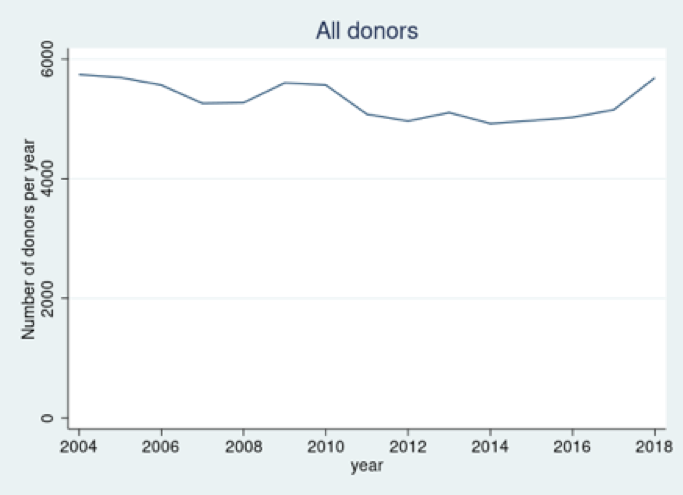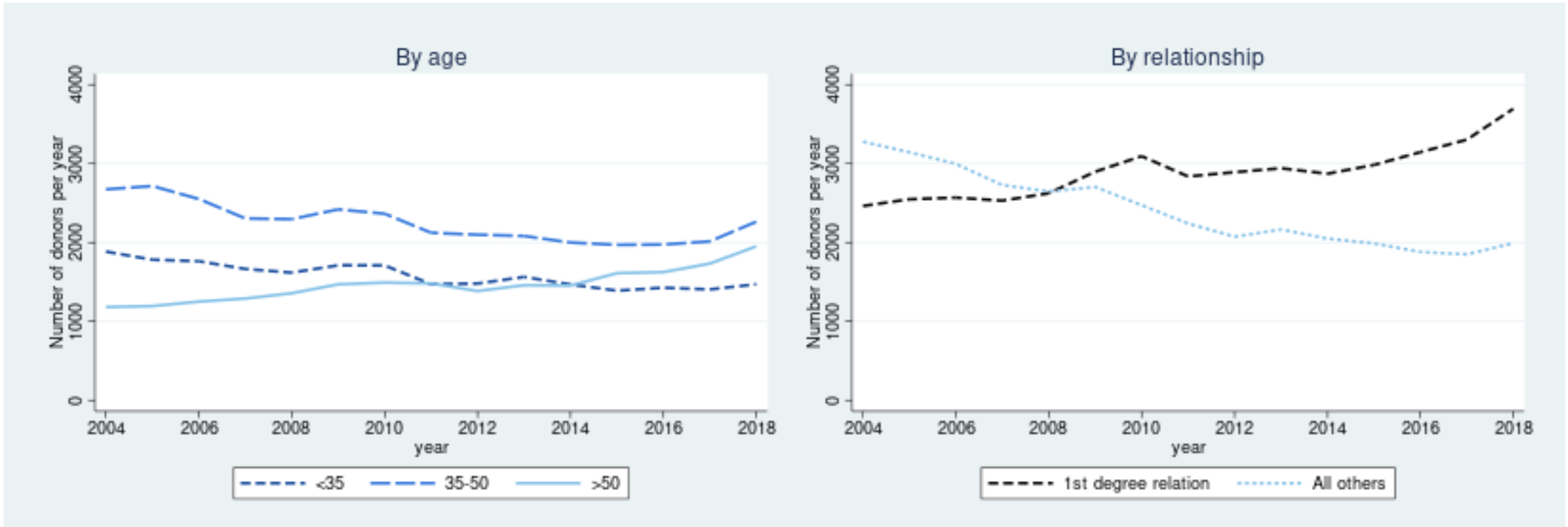Trends in Living Kidney Donation in the United States
Johns Hopkins University, Baltimore, MD
Meeting: 2020 American Transplant Congress
Abstract number: B-085
Keywords: Donation, Kidney transplantation, Living donor
Session Information
Session Name: Poster Session B: Kidney Living Donor: Selection
Session Type: Poster Session
Date: Saturday, May 30, 2020
Session Time: 3:15pm-4:00pm
 Presentation Time: 3:30pm-4:00pm
Presentation Time: 3:30pm-4:00pm
Location: Virtual
*Purpose: After peaking in 2014, the number of LKDTs per year dropped substantially in the US despite an increasing waitlist. However, trends in the KAS era have not been well-described.
*Methods: Using SRTR data we calculated the annual number of LKDTs in the United States since 2004, overall and for clinically relevant subgroups. We quantified trends over time using Poisson regression, with a spline at 2014 to characterize changes in the KAS era.
*Results: Before 2014, the number of LDKT decreased by 2% (IRR: 0.96 0.97 0.98) per year while after 2014 it increased 3% (IRR: 1.03 1.03 1.04) each year (Figure 1). However, the number of LDKTs with donor age>50 increased by 2% per year (IRR: 1.02 1.02 1.03) before 2014 and by 6% per year thereafter (IRR: 1.04 1.06 1.07) (Figure 2). The number of donors with first-degree biological relationship to the recipient decreased by 5% (IRR: 0.95 0.95 0.95) per year from 2004-2014 and decreased by 1% (IRR: 0.98 0.99 1) per year after 2014. The number of nonrelated donors, however, increased by 2% each year from 2004-2014 (IRR: 1.01 1.02 1.02) and by 5% (IRR: 1.04 1.05 1.06) per year after 2014.
*Conclusions: After reaching a nadir in 2014, the number of living kidneys per year has increased in the KAS era. This increase is driven by increasing numbers of donors over 50 and donors who are unrelated to their recipient. The change coincided with implementation of KAS.
To cite this abstract in AMA style:
Ferzola A, Yu Y, Massie AB, Segev DL, Henderson ML. Trends in Living Kidney Donation in the United States [abstract]. Am J Transplant. 2020; 20 (suppl 3). https://atcmeetingabstracts.com/abstract/trends-in-living-kidney-donation-in-the-united-states/. Accessed December 20, 2025.« Back to 2020 American Transplant Congress


